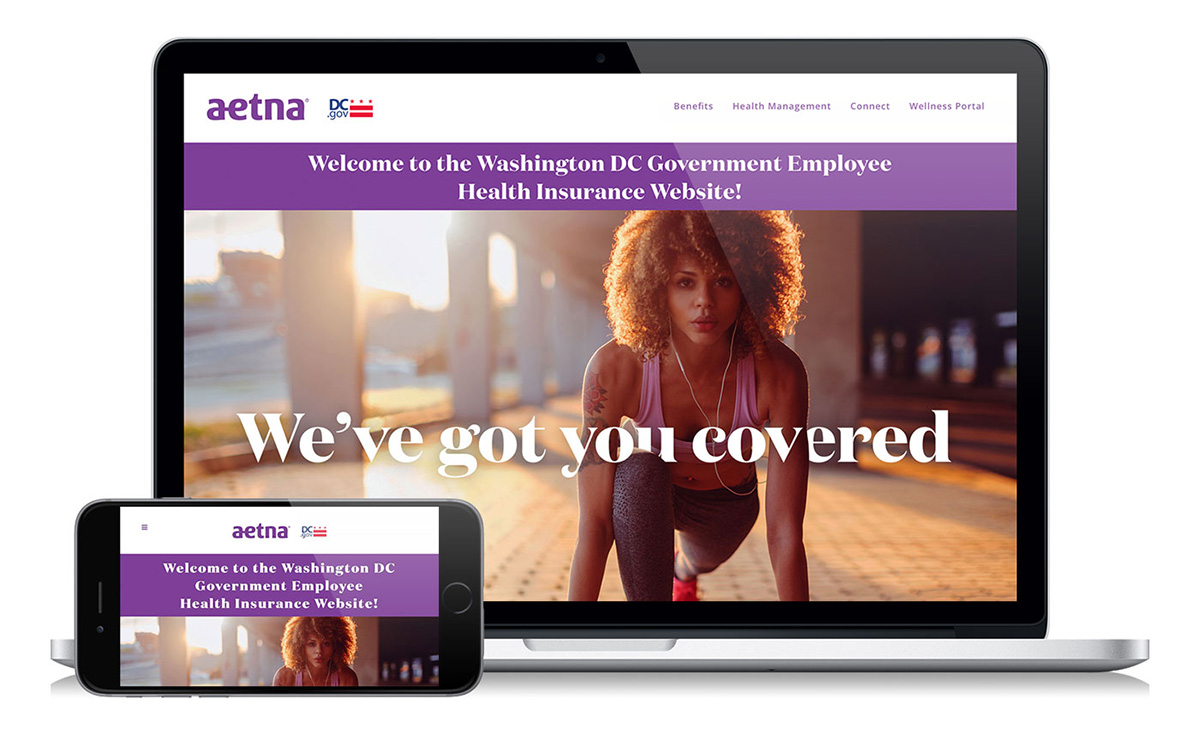Home>Finance>How Does Health Insurance Offer Financial Protection


Finance
How Does Health Insurance Offer Financial Protection
Modified: December 30, 2023
Discover how health insurance provides financial protection and peace of mind. Safeguard your finances with the right coverage and secure your financial future.
(Many of the links in this article redirect to a specific reviewed product. Your purchase of these products through affiliate links helps to generate commission for LiveWell, at no extra cost. Learn more)
Table of Contents
- Introduction
- Understanding Health Insurance
- The Importance of Financial Protection
- Coverage Benefits of Health Insurance
- Out-of-Pocket Expenses and Deductibles
- Co-payments and Coinsurance
- Health Insurance and Catastrophic Events
- Health Insurance and Emergency Medical Services
- Preventive Care and Wellness Benefits
- Insurance Networks and Provider Choices
- Understanding Policy Terms and Conditions
- Negotiating Medical Bills with Health Insurance
- Health Insurance Claims and Reimbursements
- Common Mistakes to Avoid with Health Insurance
- Conclusion
Introduction
Health insurance plays a crucial role in providing individuals and families with the financial protection needed to cover the high costs of medical care. It serves as a safety net, offering coverage for a variety of medical services, from preventive care to emergency treatments. Understanding health insurance and its benefits is essential for individuals who seek to secure their financial well-being while ensuring access to quality healthcare.
Health insurance offers individuals and families financial protection by providing coverage for medical expenses. This can range from routine doctor visits and prescription medications to more significant costs such as hospital stays and surgeries. With the rising cost of healthcare, having health insurance is not only advisable but often a requirement.
Obtaining health insurance is crucial for several reasons. Firstly, it provides access to a network of healthcare providers and specialists, ensuring that individuals receive the medical attention they need in a timely manner. It also helps individuals manage their healthcare costs by sharing expenses with the insurance provider, reducing out-of-pocket spending.
Furthermore, health insurance offers peace of mind in the face of unexpected medical emergencies. Accidents or sudden illnesses can lead to substantial medical bills that may put a strain on one’s finances. With health insurance, individuals can receive the necessary care without worrying about forking out significant amounts of money upfront.
In this article, we will delve into the various benefits of health insurance coverage. We will also explore the concepts of out-of-pocket expenses, deductibles, co-payments, and coinsurance. Additionally, we will discuss how health insurance offers financial protection during catastrophic events, emergency medical services, and preventive care.
Understanding how health insurance works and its coverage options empowers individuals to make informed decisions when selecting a policy. By knowing the terms and conditions, individuals can effectively utilize their health insurance benefits and navigate the complexities of medical billing and claims reimbursement.
Overall, health insurance provides individuals and families with the peace of mind of knowing that they are financially protected in the event of unexpected medical expenses. By taking the time to explore and understand the various coverage options available, individuals can make informed choices that meet their healthcare needs and protect their financial future.
Understanding Health Insurance
Health insurance is a contract between an individual and an insurance company, in which the individual pays a predetermined premium in exchange for coverage of medical expenses. It is designed to protect individuals from the high costs associated with healthcare services, providing financial support and access to necessary medical care.
There are various types of health insurance plans available, including employer-sponsored plans, individual plans, and government programs like Medicare and Medicaid. These plans differ in terms of coverage, cost, and provider networks. It is important to carefully review and compare different plan options to choose the one that best fits an individual’s needs and budget.
Health insurance policies typically have a network of healthcare providers, including doctors, hospitals, and specialists, with negotiated rates. When an individual seeks healthcare services within their network, the insurance company usually covers a significant portion of the costs, while out-of-network services may have higher out-of-pocket costs.
One fundamental concept to understand in health insurance is the premium. The premium is the amount an individual pays to the insurance company on a regular basis, usually monthly or annually, to maintain their coverage. Additionally, individuals may also be responsible for other costs, such as deductibles, co-payments, and coinsurance.
A deductible is the amount an individual must pay out-of-pocket before the insurance company starts covering their expenses. For instance, if an individual has a $1,000 deductible, they are responsible for paying the first $1,000 of medical expenses before their insurance begins to contribute.
Co-payments are fixed amounts that individuals pay for specific services, such as doctor visits or prescription medications. These amounts are typically set at a flat rate, ensuring that individuals have some financial responsibility for their care.
Coinsurance refers to the percentage of costs that an individual must pay after meeting their deductible. For example, if a policy has a 20% coinsurance rate, the individual will pay 20% of the eligible costs, and the insurance company will cover the remaining 80%.
Understanding the terms and conditions of a health insurance policy is essential for making informed decisions about healthcare. It is important to review factors such as coverage limits, pre-authorization requirements, and exclusions to ensure that the chosen plan meets an individual’s specific healthcare needs.
Health insurance offers individuals and families financial protection while ensuring access to quality healthcare. By understanding the basics of health insurance and the various factors that contribute to coverage and cost, individuals can make informed decisions and secure their financial well-being.
The Importance of Financial Protection
Financial protection is a critical aspect of health insurance as it safeguards individuals and families from the potentially crippling costs of medical care. Without appropriate coverage, healthcare expenses can quickly accumulate, leading to significant financial strain and potentially jeopardizing one’s financial stability.
One of the primary benefits of health insurance is that it provides a buffer against unexpected medical expenses. The cost of healthcare services, including hospital stays, surgeries, and specialized treatments, can be exorbitant. In the absence of health insurance, individuals may be forced to pay these costs out-of-pocket, which can lead to crippling debt and financial stress.
By having health insurance, individuals can mitigate the financial risks associated with healthcare. Instead of facing the full burden of medical bills, individuals are only responsible for their portion of the costs, which is often significantly lower due to negotiated rates with healthcare providers.
Health insurance also helps individuals plan and budget for their healthcare expenses. With a clear understanding of their coverage and potential out-of-pocket costs, individuals can make informed decisions regarding their healthcare choices. This allows for better financial planning and reduces the likelihood of being caught off guard by unexpected bills.
Beyond protecting individuals from medical expenses, health insurance also provides access to a network of healthcare providers and specialists. This network ensures access to quality care and timely medical attention. Without insurance, individuals may face limitations in their healthcare options, potentially compromising the quality of care they receive.
Furthermore, health insurance offers preventive care benefits that can help individuals maintain good health and identify potential health issues before they become more significant problems. Regular check-ups, screenings, and vaccinations are often covered by insurance, promoting early detection and intervention.
The importance of financial protection through health insurance becomes especially evident during times of emergency or catastrophic events. Whether it’s a sudden illness, a major accident, or a chronic condition, health insurance provides a safety net, allowing individuals to receive the necessary medical care without the added burden of overwhelming expenses.
Ultimately, having health insurance and the associated financial protection allows individuals and families to prioritize their health and well-being without the constant worry of devastating medical bills. It is an essential aspect of maintaining financial stability and peace of mind in today’s healthcare landscape.
Coverage Benefits of Health Insurance
Health insurance provides a range of coverage benefits that help individuals and families access necessary healthcare services. These benefits go beyond financial protection and play a crucial role in promoting overall well-being and managing healthcare costs.
One of the primary coverage benefits of health insurance is access to a network of healthcare providers. Insurance plans typically have a network of doctors, specialists, hospitals, and clinics that have agreed to provide services at negotiated rates. This network ensures that individuals have reliable access to quality care and a wide range of medical professionals.
Health insurance also offers coverage for a broad spectrum of medical services. This can include preventive care, such as routine check-ups, vaccinations, and screenings, which are crucial for maintaining good health and catching potential health issues early on.
In addition to preventive care, health insurance covers essential medical services like hospital stays, surgeries, diagnostic tests, and prescription medications. These services can be costly, and having insurance coverage helps to share the financial burden with the insurance company, making them more affordable for individuals.
Another significant benefit of health insurance coverage is the inclusion of mental health services. Many insurance plans recognize the importance of mental health and provide coverage for therapy sessions, counseling, and psychiatric medications. This ensures that individuals have access to the resources they need to maintain their mental well-being.
Furthermore, health insurance often includes coverage for specialized treatments and therapies. This can include rehabilitation services, physical therapy, occupational therapy, and other specialized interventions necessary for recovery from injuries or managing chronic conditions.
Health insurance also provides coverage for emergency medical services, offering financial protection during unexpected medical emergencies. In such situations, individuals can seek emergency care without burdening themselves with excessive medical bills that can impact their financial stability.
Coverage benefits may vary depending on the specific health insurance plan chosen. It is crucial for individuals to carefully review the details of the coverage before selecting a policy to ensure that it aligns with their specific healthcare needs.
Overall, the coverage benefits of health insurance provide individuals and families with the access to critical medical services, preventive care, and specialized treatments they need to maintain their health. It not only contributes to their physical well-being but also offers peace of mind and financial protection in the face of healthcare expenses.
Out-of-Pocket Expenses and Deductibles
When it comes to health insurance, understanding out-of-pocket expenses and deductibles is essential for managing healthcare costs and financial obligations. These terms play a significant role in determining how much individuals are responsible for paying for their medical care.
Out-of-pocket expenses refer to the costs that individuals must pay for healthcare services, even if they have health insurance coverage. These expenses typically include deductibles, co-payments, and coinsurance. It’s important to note that not all healthcare services may count towards out-of-pocket expenses, so it’s crucial to review the policy carefully to understand what is covered.
A deductible is the amount an individual is required to pay out-of-pocket before their insurance coverage kicks in. For example, if an individual’s health insurance has a $1,000 deductible, they must pay $1,000 for covered medical services before the insurance company will start paying. Once the deductible is met, the insurance company will typically cover a portion of the costs, as outlined in the policy.
Co-payments, on the other hand, are fixed amounts that individuals are responsible for paying for specific services, such as doctor visits or prescription medications. For instance, an insurance policy might require a $20 co-payment for each doctor visit. The co-payment amount is paid at the time of the visit, and the insurance company covers the remaining costs.
Coinsurance is the percentage of medical costs that an individual is responsible for paying after meeting their deductible. For example, if an insurance policy has a 20% coinsurance rate, the individual is responsible for paying 20% of the covered costs, and the insurance company will cover the remaining 80%.
It’s important for individuals to consider their out-of-pocket expenses, especially deductibles, when selecting a health insurance plan. Generally, plans with lower monthly premiums tend to have higher deductibles, while plans with higher premiums tend to have lower deductibles. Individuals should assess their healthcare needs and financial situation to determine which option is more suitable.
It’s also worth noting that some health insurance plans have an out-of-pocket maximum. Once an individual reaches this maximum amount in out-of-pocket expenses, the insurance company will typically cover 100% of the remaining costs for covered services for the remainder of the policy year. This provides a level of financial protection, ensuring that individuals are not burdened with unlimited expenses in case of a serious medical condition or catastrophic event.
Understanding out-of-pocket expenses and deductibles is crucial for individuals to effectively manage their healthcare costs and make informed decisions about their health insurance coverage. By knowing these terms and carefully reviewing their policy, individuals can better navigate their financial responsibilities and ensure that they are prepared for any out-of-pocket expenses that may arise.
Co-payments and Coinsurance
Co-payments and coinsurance are essential concepts to understand when it comes to health insurance. Both terms refer to the sharing of healthcare costs between the insured individual and the insurance company, but they work in different ways.
A co-payment, also known as a “co-pay,” is a fixed amount that an individual must pay at the time of receiving certain healthcare services. This amount is predetermined and outlined in the insurance policy. For example, a policy might require a $30 co-payment for a primary care doctor visit or a $10 co-payment for a prescription medication.
Co-payments are typically a flat fee and do not usually vary based on the cost of the service. They are meant to share the financial responsibility between the insured person and the insurance company. After paying the co-payment, the insurance company covers the remaining costs of the service, as outlined in the policy.
Coinsurance, on the other hand, is a percentage of the medical costs that an individual is responsible for paying, after meeting their deductible. For example, if the insurance policy has a 20% coinsurance rate, the insured person would pay 20% of the covered costs, and the insurance company will cover the remaining 80%.
Coinsurance typically applies after the deductible has been met. It is important to note that coinsurance rates can vary depending on the type of service received. For instance, coinsurance rates for hospital stays or specialized treatments may differ from those for outpatient visits or diagnostic tests.
Both co-payments and coinsurance help individuals share the financial burden of healthcare expenses with the insurance company. The purpose of these cost-sharing methods is to ensure that individuals have some stake in their healthcare costs, promoting responsible usage of medical services while still providing access to necessary care.
It is important for individuals to review their health insurance policy to understand the specific co-payment and coinsurance requirements for different services. Knowing these details will help individuals make informed decisions about their healthcare and budget accordingly.
It is worth noting that some insurance plans may have limitations on the total amount of co-payments or coinsurance an individual will be responsible for in a given policy year. This cap is known as an out-of-pocket maximum. Once this maximum is reached, the insurance company typically covers 100% of the remaining costs for covered services.
Understanding co-payments and coinsurance is crucial for individuals to navigate their healthcare costs effectively. By being aware of these terms and their associated rates, individuals can budget for their healthcare expenses and make informed decisions about their health insurance coverage.
Health Insurance and Catastrophic Events
Health insurance plays a crucial role in providing individuals and families with financial protection during catastrophic events. These events, such as major accidents, severe illnesses, or chronic conditions, can result in expensive medical treatments and ongoing healthcare expenses. Having the right health insurance coverage ensures that individuals are not burdened with the full cost of these catastrophic events.
During a catastrophic event, health insurance acts as a safety net by providing coverage for a wide range of services and treatments. This can include hospital stays, surgeries, medications, rehabilitation, and ongoing care. Insurance coverage reduces the financial strain on individuals and ensures that necessary medical care is accessible without the fear of astronomical medical bills.
One of the key benefits of health insurance during catastrophic events is the mitigation of out-of-pocket expenses. Most health insurance plans have an out-of-pocket maximum, which is the maximum amount an individual is required to pay for covered services in a given policy year. Once this maximum is reached, the insurance company covers 100% of the remaining costs for covered services.
Furthermore, health insurance provides individuals with access to a network of healthcare providers, including specialists and facilities that are well-equipped to handle complex cases related to catastrophic events. This ensures that individuals can receive the specialized care they need without delay.
Another important aspect of health insurance coverage during catastrophic events is the inclusion of emergency and ambulance services. In the event of a sudden accident or severe illness, individuals may require emergency medical attention and transportation. Health insurance typically covers these services, offering financial protection during these critical moments.
Health insurance coverage is particularly crucial for individuals with pre-existing conditions or chronic illnesses. The cost of ongoing treatment and management of these conditions can be significant, and health insurance ensures access to affordable care and medications.
Ultimately, having health insurance during catastrophic events provides individuals and their families with the peace of mind knowing that they have financial protection in place. It allows them to focus on their recovery and well-being without the added stress of overwhelming medical bills.
It is essential for individuals to carefully review their health insurance policy to ensure they have adequate coverage for catastrophic events. This includes understanding the terms and conditions, coverage limits, and the process for filing claims. By being proactive and selecting the right health insurance coverage, individuals can safeguard their financial well-being in the face of unexpected and catastrophic events.
Health Insurance and Emergency Medical Services
Health insurance plays a crucial role in providing individuals with access to emergency medical services. In times of sudden accidents or severe illnesses, emergency services are often needed, and having the right health insurance coverage ensures that individuals can receive the necessary care without incurring substantial financial burdens.
Emergency medical services encompass a wide range of urgent healthcare needs, including ambulance transportation, emergency room visits, diagnostic tests, surgeries, and specialized treatments. These services are vital in stabilizing and treating life-threatening conditions or injuries.
Health insurance coverage helps to mitigate the high costs associated with emergency medical services. Without insurance, individuals may find themselves facing exorbitant out-of-pocket expenses, which can cause significant financial distress.
When individuals have health insurance, their coverage typically includes emergency services. Depending on the policy, insurance may cover ambulance transportation costs, emergency room visits, and necessary medical treatments received in emergency settings.
It’s important for individuals to understand the specific terms and conditions of their health insurance policy regarding emergency medical services. This includes knowing whether pre-authorization is required for emergency care and understanding any coverage limitations.
Health insurance coverage for emergency medical services also extends to out-of-network providers. In emergency situations when immediate care is required, individuals may not have the option to choose in-network providers. Health insurance coverage ensures that individuals can still receive necessary care from out-of-network providers without facing excessively high costs.
It’s worth noting that while health insurance covers emergency medical services, individuals may still be responsible for copayments, deductibles, and coinsurance. These costs vary depending on the insurance plan and should be carefully reviewed when seeking emergency care.
During emergency situations, individuals should prioritize their health and safety above financial considerations. If facing a medical emergency, it is crucial to seek medical help immediately, as delays can have severe consequences. Health insurance provides the necessary financial safety net to ensure individuals can access emergency medical services promptly without compromising their well-being.
It is essential for individuals to review their health insurance policy, understand the coverage for emergency medical services, and keep their insurance information easily accessible in case of an emergency. Being informed and prepared empowers individuals to make the best decisions in critical moments and ensures that they receive the urgent care they need without incurring overwhelming expenses.
Preventive Care and Wellness Benefits
Health insurance not only provides coverage for medical treatments and emergencies, but it also includes important preventive care and wellness benefits. Preventive care plays a crucial role in maintaining good health, preventing diseases, and detecting potential health issues early on. By offering coverage for these services, health insurance promotes overall well-being and helps individuals stay proactive about their health.
Preventive care services covered by health insurance often include routine check-ups, vaccinations, and screenings. Regular check-ups with healthcare providers allow for the monitoring of vital signs, identification of risk factors, and early detection of potential health problems. Vaccinations are crucial for preventing various diseases and protecting individuals from serious illnesses. Additionally, screenings such as mammograms, Pap smears, and colonoscopies are instrumental in detecting cancer and other medical conditions at their early stages.
By providing coverage for preventive care services, health insurance encourages individuals to take a proactive approach to their health. Regular check-ups and screenings enable healthcare professionals to provide timely interventions and advice, helping individuals maintain good health and prevent the progression of diseases.
In addition to preventive care, health insurance offers wellness benefits that promote healthy lifestyles and overall well-being. These benefits can include coverage for gym memberships, weight management programs, smoking cessation resources, and mental health counseling. By providing access to these wellness services, health insurance supports individuals in adopting healthier habits and managing chronic conditions more effectively.
Wellness benefits can also include incentives and rewards programs that encourage individuals to make positive lifestyle choices. This can range from discounts on health-related products and services to financial incentives for achieving specific health goals, such as maintaining healthy blood pressure or cholesterol levels.
Investing in preventive care and wellness benefits not only improves individuals’ health outcomes but can also lead to cost savings in the long run. By focusing on prevention and early detection, individuals can address health issues before they become more severe and require costly interventions.
It is important for individuals to review their health insurance policy to understand the specific preventive care and wellness benefits covered. This includes knowing the frequency and types of screenings and check-up visits that are included, as well as any requirements or limitations associated with wellness programs.
By taking advantage of the preventive care and wellness benefits offered by health insurance, individuals can take an active role in maintaining their health, preventing diseases, and improving their overall well-being. These services contribute to a proactive and holistic approach to healthcare, benefiting both individuals and the healthcare system as a whole.
Insurance Networks and Provider Choices
When it comes to health insurance, understanding insurance networks and provider choices is essential for individuals to make informed decisions about their healthcare. Insurance networks refer to the group of healthcare providers, including doctors, hospitals, clinics, and specialists, that have contracts with an insurance company to provide services at negotiated rates.
Health insurance plans often have different types of networks, including Preferred Provider Organizations (PPOs), Health Maintenance Organizations (HMOs), and Exclusive Provider Organizations (EPOs). Each network type has unique considerations and implications for provider choices and coverage.
A PPO offers more flexibility in terms of provider choice. Individuals with a PPO plan can typically receive care from both in-network and out-of-network providers. However, the insurance company typically covers a greater portion of the costs when using in-network providers as compared to out-of-network providers. Out-of-network services may also require higher out-of-pocket expenses.
An HMO, on the other hand, operates with a primary care physician (PCP) as the central point of contact for healthcare. HMO members must generally obtain referrals from their PCP to see specialists or receive specialized services. HMOs typically require individuals to receive care only from in-network providers, with limited coverage, if any, for out-of-network services.
EPO plans are similar to HMOs in that they require individuals to receive care from in-network providers. However, EPOs do not usually require referrals from a PCP, allowing for more direct access to certain specialists and services within the network.
When selecting a health insurance plan, individuals should carefully consider their healthcare needs and preferences. This includes evaluating the network size and the availability of preferred healthcare providers. Evaluating provider directories and consulting with primary care physicians can help individuals ensure that their preferred providers are part of the insurance network.
It’s important to note that the inclusion of a healthcare provider in an insurance network can change. Therefore, it is advisable to periodically review the network and verify provider participation to ensure that preferred providers remain in-network.
Understanding insurance networks and provider choices is crucial for individuals to maximize their health insurance benefits and minimize out-of-pocket costs. Staying within the insurance network allows individuals to access negotiated rates and take advantage of the coverage provided by their health insurance plan.
Individuals should carefully review their health insurance policy and network options to ensure that the chosen plan meets their healthcare needs, including access to preferred providers and specialists. This way, individuals can receive the care they need while optimizing their health insurance benefits.
Understanding Policy Terms and Conditions
Understanding the terms and conditions of a health insurance policy is crucial for individuals to make the most of their coverage and avoid any unexpected surprises. Health insurance policies can be complex, with various terms and conditions that dictate coverage, limitations, and requirements.
One key aspect to understand is the coverage provided by the insurance policy. This includes knowing which medical services and treatments are covered, as well as any exclusions or limitations. For example, some policies may not cover certain elective procedures, experimental treatments, or alternative therapies.
It’s important to review the policy to understand the scope of coverage for specific services, such as hospital stays, surgeries, diagnostic tests, prescription medications, and preventive care. Pay attention to any criteria or requirements for coverage, such as pre-authorization for certain procedures or referrals from a primary care physician for specialized care.
The policy will also outline any cost-sharing provisions, such as deductibles, co-payments, and coinsurance, which determine the amount that individuals are responsible for paying out-of-pocket. It’s important to understand how these costs are calculated and how they apply to different services.
Another important aspect of policy terms and conditions is the network of healthcare providers. The policy will specify whether it is an HMO, PPO, EPO, or other type of network, and the rules for accessing in-network and out-of-network providers. Understanding the network and provider choices is crucial to ensure that preferred healthcare providers are part of the network.
Additionally, individuals should review the policy for any requirements related to referrals, pre-authorization, or pre-certification for certain services. Failure to comply with these requirements could result in reduced coverage or denial of claim reimbursement.
Other important policy terms to understand include the duration of the coverage, the process for filing claims, and any waiting periods for certain benefits. This information ensures that individuals are aware of the timeline and procedures for accessing and utilizing their health insurance benefits.
It is crucial to read and understand the policy document thoroughly before making decisions about healthcare. If there are any terms or conditions that are unclear, individuals should reach out to their insurance provider or seek assistance from a healthcare advocate or insurance specialist.
By understanding the terms and conditions of a health insurance policy, individuals can make informed decisions, effectively utilize their coverage, and prevent any unexpected financial burdens. It empowers individuals to be active participants in their healthcare journey and ensures smooth navigation of the complexities of the insurance system.
Negotiating Medical Bills with Health Insurance
When faced with high medical bills, individuals can take proactive steps to negotiate and potentially reduce their healthcare costs with the help of their health insurance coverage. Negotiating medical bills can help individuals avoid financial strain and minimize out-of-pocket expenses. Here are some strategies to consider:
1. Understand your insurance policy: Familiarize yourself with the terms and conditions of your health insurance policy, including coverage limits, deductibles, and out-of-pocket maximums. Understanding your coverage will help you determine what expenses should be covered by your insurance.
2. Review your medical bills: Carefully examine your medical bills for any mistakes or discrepancies. Billing errors are not uncommon, and correcting them can help lower your overall costs. If you spot an error, contact your healthcare provider’s billing department to address the issue.
3. Check for negotiated rates: Verify whether your healthcare provider has negotiated rates with your insurance company. Negotiated rates are pre-negotiated reduced fees for medical services. If you find that your bills are higher than the negotiated rates, discuss the discrepancy with both your provider and your insurance company.
4. Seek pre-authorization and referral compliance: Make sure you follow your insurance plan’s requirements for pre-authorization and referrals. Failure to comply with these requirements could result in increased out-of-pocket costs. Confirm that all necessary paperwork and authorizations are in place before undergoing any procedures or treatments.
5. Utilize your insurance provider’s resources: Reach out to your insurance company’s customer service or patient advocacy department. They can provide guidance and help you understand your coverage, answer your questions, and assist in resolving any issues related to your medical bills.
6. Negotiate with healthcare providers: If you receive a bill that seems unaffordable, don’t hesitate to communicate with your healthcare provider’s billing department. They may be willing to negotiate a reduced rate or offer a payment plan that suits your budget. Explain your financial situation and discuss options for managing the costs.
7. Consider professional negotiation services: In some cases, it may be beneficial to enlist the help of professional medical bill negotiators or patient advocates. These professionals can negotiate on your behalf with healthcare providers and insurance companies to potentially lower your medical bills.
Remember, proactive communication and understanding your rights as an insured individual are key to negotiating medical bills effectively. By taking the initiative and exploring these strategies, you may be able to alleviate some financial burden and ensure that your healthcare costs are reasonable and manageable.
Health Insurance Claims and Reimbursements
Health insurance claims and reimbursements are essential components of the healthcare system, ensuring that individuals can receive the benefits of their health insurance coverage and obtain timely reimbursement for covered services. Understanding the claims process is vital for individuals to navigate the insurance system effectively and maximize their health insurance benefits.
When you receive medical care, whether it’s a doctor’s visit, hospital stay, or prescription medication, the healthcare provider generates a claim. This claim includes details of the services rendered, costs, and any relevant medical codes. The claim is then submitted to the insurance company for processing.
Once the insurance company reviews the claim, they determine the amount they will cover based on the coverage provided by the policy. The insurer then notifies the healthcare provider of the payment amount, and the provider bills the individual for any remaining balance.
The claims process can vary depending on factors such as the type of provider, the insurance company’s requirements, and the specifics of the individual policy. Some insurance plans require pre-authorization or certain documentation to be submitted before claims can be processed.
Reimbursement for covered services is typically issued to the healthcare provider, and any applicable deductibles, co-payments, or coinsurance will be billed to the insured individual. In some cases, the individual may need to pay the provider upfront and then seek reimbursement from the insurance company.
To ensure a smooth claims and reimbursement process, individuals should:
- Provide accurate and complete information: Ensure that all personal information, including policy details and identification numbers, is correctly provided to healthcare providers during each visit.
- Keep copies of all relevant documents: Maintain copies of bills, medical records, receipts, and insurance correspondence. These documents may be needed to support claims or address any disputes or inquiries.
- Understand coverage and benefits: Familiarize yourself with the coverage and benefits provided by your health insurance policy. This includes knowing the limits, exclusions, and any requirements for pre-authorization or referrals.
- Follow up with insurance company and healthcare providers: If there are delays or issues with claim processing or reimbursement, reach out to the insurance company and healthcare providers to inquire about the status and address any concerns or discrepancies that may arise.
- Keep track of claims and payments: Monitor your claims and payments to ensure that you are being billed accurately and that reimbursements are processed correctly. Reviewing Explanation of Benefits (EOB) statements from your insurance company can provide valuable information about claim status and payments made.
By being proactive and understanding the claims and reimbursement process, individuals can ensure that they receive the full benefits of their health insurance coverage and minimize any potential financial discrepancies or difficulties. It empowers individuals to take control of their healthcare finances and navigate the insurance system with confidence.
Common Mistakes to Avoid with Health Insurance
Having health insurance is crucial for protecting your financial well-being and accessing necessary healthcare services. However, there are common mistakes that individuals can make when it comes to managing their health insurance coverage. By being aware of these mistakes, you can avoid potential pitfalls and make the most out of your health insurance benefits.
1. Not understanding your policy: One of the biggest mistakes is not thoroughly reading and understanding your health insurance policy. Take the time to familiarize yourself with the coverage details, including deductibles, co-pays, and coverage limitations. Understanding your policy ensures that you are aware of what services are covered and what costs you may be responsible for.
2. Ignoring network restrictions: Each health insurance plan typically has a network of preferred providers. Neglecting to check if your healthcare providers are part of your insurance network can result in higher out-of-pocket costs. Always verify the network status of your providers before seeking medical care.
3. Not seeking pre-authorization or referrals: Some health insurance plans require pre-authorization or referrals for certain services, such as specialist visits or expensive medical procedures. Failing to obtain the necessary approvals in advance can lead to denial of coverage or increased out-of-pocket expenses. Always follow the proper procedures outlined in your policy to ensure coverage.
4. Not reviewing your medical bills: Mistakes and billing errors happen more often than you might think. It is crucial to carefully review your medical bills for accuracy and verify that you are billed only for the services you received. If you spot any discrepancies or questionable charges, contact your healthcare provider’s billing department to address the issue promptly.
5. Choosing the wrong plan for your needs: It’s essential to select a health insurance plan that aligns with your healthcare needs and budget. Choosing a plan solely based on the premium cost may result in inadequate coverage or high out-of-pocket costs. Assess your medical needs, consider potential future healthcare requirements, and carefully compare plan options before making a decision.
6. Skipping preventive care: Preventive care services, such as screenings and vaccinations, can help detect health issues early or prevent them altogether. Some health insurance plans cover preventive services at no additional cost. Failing to take advantage of these services not only compromises your health but also means missing out on the potential cost savings they offer in the long run.
7. Overpaying for medications: If your health insurance plan includes prescription drug coverage, be proactive in exploring lower-cost options. Compare prices at different pharmacies, consider generic alternatives when available, and consult with your healthcare provider about cost-effective medication options.
8. Not seeking clarification: If you have questions or concerns about your health insurance coverage, don’t hesitate to reach out to your insurance company’s customer service department. They can provide clarification on coverage details, explain the claims process, and help resolve any issues or disputes that may arise.
By avoiding these common health insurance mistakes, you can ensure that you make informed decisions, maximize your coverage, and minimize any potential financial burdens. Taking the time to understand your policy, seeking appropriate care within your network, and staying proactive in managing your healthcare expenses will enable you to navigate the health insurance landscape wisely.
Conclusion
Health insurance provides individuals and families with essential financial protection and access to quality healthcare services. Understanding the intricacies of health insurance is crucial for individuals to make informed decisions, effectively utilize their coverage, and navigate the healthcare landscape with confidence.
From understanding policy terms and conditions to maximizing coverage benefits, individuals who are knowledgeable about health insurance can better protect their financial well-being and ensure access to necessary medical care. By being proactive and avoiding common mistakes, such as overlooking network restrictions or not reviewing medical bills, individuals can make the most of their health insurance benefits.
Health insurance offers coverage for a range of services, including preventive care, emergency medical services, and specialized treatments. It encompasses elements such as deductibles, co-payments, and coinsurance that determine individual financial responsibilities. By understanding these components, individuals can budget appropriately and make informed decisions about their healthcare options.
Health insurance also plays a pivotal role in providing financial protection during catastrophic events and ensures individuals have access to critical medical care without immense financial strain. It allows individuals to focus on their health and recovery, knowing that their insurance provides a safety net for unexpected expenses.
Preventive care and wellness benefits offered by health insurance promote a proactive approach to healthcare, focusing on prevention, early detection, and overall well-being. By taking advantage of these benefits, individuals can maintain good health, prevent diseases, and improve their overall quality of life.
In conclusion, health insurance is a vital tool for individuals and families to secure their financial well-being and gain access to necessary healthcare services. By understanding the details of their health insurance policy, individuals can effectively navigate the system, make informed decisions, and ensure that they receive the full benefits of their coverage. By avoiding common mistakes and taking proactive steps, individuals can protect their health and their finances, fostering peace of mind and a healthier future.














